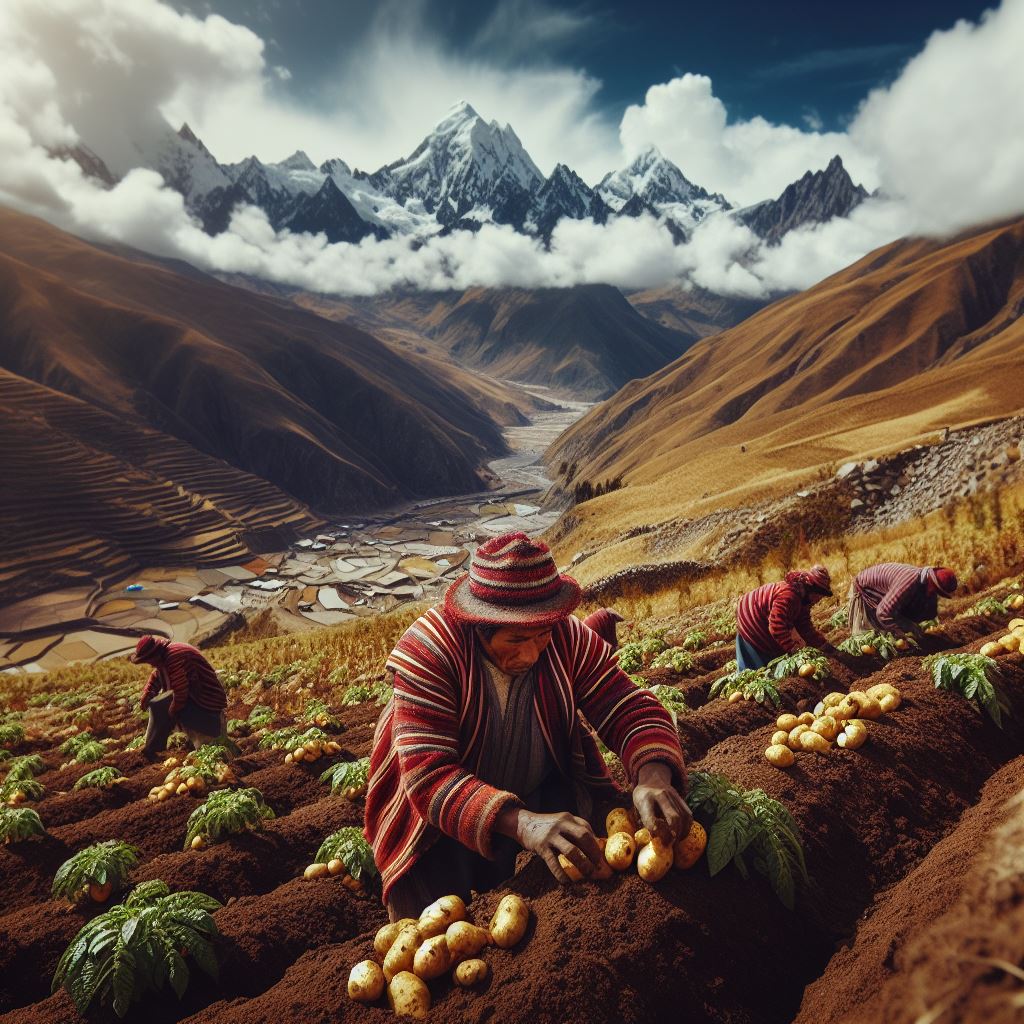The humble potato, a staple food gracing tables worldwide, boasts a rich and fascinating history. From its unlikely beginnings as a tiny seed in the Andes mountains to its global domination on supermarket shelves, the potato’s journey is a testament to human ingenuity and adaptation. Let’s delve into the captivating story of this versatile vegetable, exploring its origins, challenges, cultivation evolution, and global impact.
Origins in the Andes:
The potato’s story begins over 8,000 years ago in the high Andes mountains of South America, specifically in the region encompassing modern-day Peru, Bolivia, and Ecuador. Here, indigenous communities, like the Incas, cultivated various potato varieties, each with unique colors, shapes, and flavors. They called them “papa,” and they quickly became a crucial part of their diet, thriving in the region’s cool, high-altitude climate.
From the Andes to the World:
The arrival of Spanish conquistadors in the 16th century marked a turning point in the potato history. Recognizing its potential as a high-yielding and easily transportable food source, the Spanish introduced it to Europe. Initially met with skepticism due to its unfamiliar appearance and potential association with poisonous nightshade plants, the potato gradually gained acceptance. However, its adoption was slow and uneven across different European regions.
Challenges and Adaptations:
The potato’s journey across continents wasn’t without its challenges. The Great Famine in Ireland during the mid-19th century, largely caused by a potato blight that devastated crops, serves as a stark reminder of the potato’s susceptibility to disease. This event, along with other historical challenges like late blight outbreaks across Europe, highlighted the need for diversification in potato varieties and cultivation practices.
Evolution of Potato Cultivation:
Over the centuries, potato cultivation has undergone significant advancements. Traditional methods involved hand-planting and harvesting, which were labor-intensive processes. The development of mechanical planters and harvesters revolutionized the industry, improving efficiency and productivity. Additionally, the introduction of new disease-resistant varieties and advancements in storage techniques helped ensure the potato’s continued success as a global food source.
The Global Spud:
Today, the potato is the world’s fourth most cultivated food crop, after wheat, rice, and maize. It is grown in over 130 countries and plays a vital role in food security across the globe. From French fries to mashed potatoes, potato chips to gnocchi, the potato’s versatility contributes to the culinary traditions of countless cultures.
Interesting Facts and Stories:
The potato history is filled with interesting facts and stories. Did you know that:
- The potato was once used as currency in the Inca Empire?
- The first potato to reach Europe was likely brought back by a Spanish explorer in the 1500s?
- Astronauts on the Apollo 11 mission actually took dehydrated potatoes with them to the moon?
Conclusion:
The potato’s journey is a testament to its adaptability, resilience, and cultural significance. From its humble beginnings in the Andes to its global presence on supermarket shelves, the potato continues to be a vital food source for millions and a source of culinary inspiration around the world. As we continue to explore new varieties and develop sustainable cultivation practices, the potato’s journey is far from over. It remains a fascinating example of how a humble crop can have a profound impact on the world we live in.

